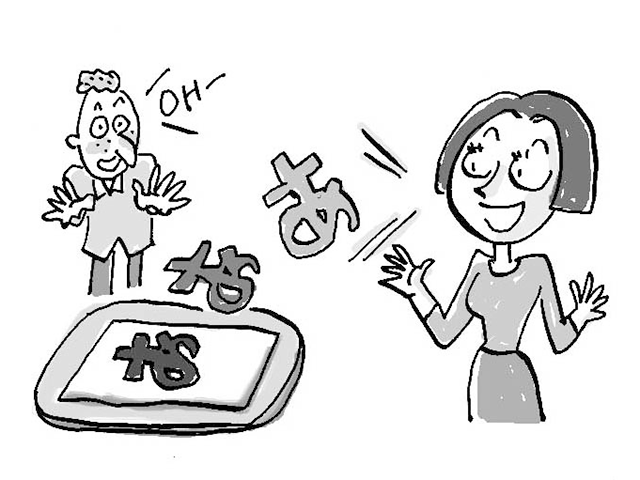Japanese is the Easiest Language in the World! !?

Japanese is generally perceived to be a difficult language to learn. “In fact, it is the easiest language in the world,” KISHIMOTO Tatsuo, professor of Ritsumeikan University mentioned in his book “Secrets of Nihongo” (HIRA-TAI BOOKS). However, it does not mean it is all easy. One of the peculiarites of the Japanese language is that the characters are the same as the phonetic symbols.
In brief, you can speak and write by just memorizing the 46 different pronunciations of Japanese characters. The character “a” in English is pronounced in several ways, such as “a,” “ei,” “e,” but in Japanese, “a” is only pronounced as “a.” As long as it is written in hiragana (a simple form of reading characters), you can immediately read correctly and you can write what you speak correctly.
Japanese consists of 46 different sounds, but accurately speaking, an additional 58 sounds, that are slight variations of the basic 46, developed naturally to help make pronunciation easier. As these 58 sounds have similar sounds to the basic 46, you do not have to make much of an effort to learn them. If only hiragana is used, Japanese would be the world’s easiest language. The reason people feel Japanese is difficult is that Japanese has three different forms of writing — hiragana, katakana and kanji.
In Japanese, there are many words that have the same sounds but different meanings. For instance, “Kisho.” This word has various meanings including “getting up,” “whether” and “temperament.” You can understand the correct meaning by looking at the context of the sentence, even if it is written in hiragana. However, sometimes it invites misunderstandings. If you think that basic Japanese is hiragana, and katakana and kanji are used to make the meanings of hiragana characters clearer, then Japanese is easy.
